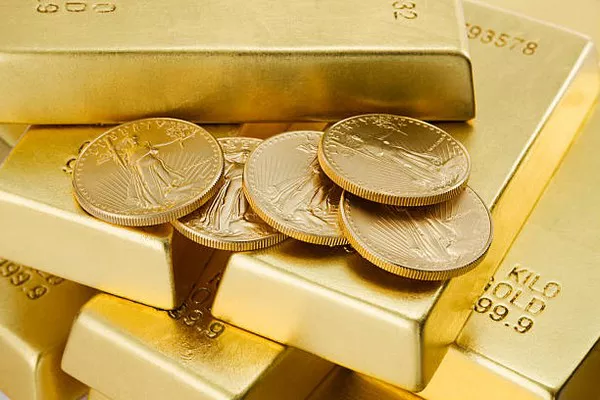Gold, long considered a safe-haven asset and a reliable store of value, has experienced a notable decline in recent times, leaving investors and market analysts seeking answers. In this article, we will delve into the multifaceted factors contributing to the drop in gold prices and explore the implications for investors and the broader financial markets.
Rising Interest Rates:
One of the primary drivers behind the recent decline in gold prices is the shift in global interest rates. Gold, which doesn’t offer any yield or interest, tends to lose appeal when interest rates rise. As central banks around the world signal a move towards tighter monetary policy to combat inflation, the opportunity cost of holding gold increases. Investors may prefer interest-bearing assets, such as bonds, that provide a steady income stream over the non-interest-bearing gold.
The Federal Reserve’s decision to raise interest rates can have a particularly significant impact on gold prices, as the U.S. dollar tends to strengthen in such an environment. A stronger dollar makes gold more expensive for investors using other currencies, leading to decreased demand and lower prices.
Dollar Strength and Weakness in Other Currencies:
The strength of the U.S. dollar is a crucial factor influencing gold prices. Gold and the U.S. dollar often have an inverse relationship, meaning when the dollar strengthens, gold prices tend to decline. The recent strength of the U.S. dollar, driven by a robust economic recovery and rising interest rates, has put downward pressure on gold.
Furthermore, weakness in other major currencies, such as the Euro and the Japanese Yen, contributes to the decline in gold prices. As investors seek refuge in the U.S. dollar during periods of uncertainty, they may reduce their exposure to gold, causing a drop in demand and subsequent price decreases.
Global Economic Recovery:
The ongoing global economic recovery has provided investors with alternative opportunities in riskier assets, such as equities. During periods of economic growth and optimism, investors may shift away from safe-haven assets like gold in favor of higher-returning investments. As economies rebound from the impact of the COVID-19 pandemic, the allure of gold as a safe haven diminishes, leading to decreased demand and lower prices.
Crypto Competition:
The emergence and growing popularity of cryptocurrencies, particularly Bitcoin, have introduced a new dynamic to the investment landscape. Some investors view cryptocurrencies as a modern alternative to traditional stores of value, including gold. The decentralized nature of cryptocurrencies and their potential for high returns attract a segment of investors away from gold.
As digital assets gain wider acceptance, they may divert funds that would otherwise have been allocated to gold, contributing to the decline in its prices. However, it’s essential to note that gold and cryptocurrencies serve different purposes in investment portfolios, and their coexistence is not necessarily a zero-sum game.
Central Bank Actions:
Central banks play a pivotal role in influencing gold prices through their monetary policies and gold reserves. Periods of gold price decline can be linked to central banks reducing their gold holdings or implementing policies that signal a move away from gold as a reserve asset.
Additionally, some central banks actively manage their currency’s value, and interventions in the foreign exchange markets can impact gold prices. If a central bank sells large quantities of gold or adjusts its currency reserves, it can create a ripple effect in the gold market, affecting prices.
Technical Factors and Market Sentiment:
Technical factors and market sentiment also contribute to the fluctuations in gold prices. Traders and investors closely monitor technical indicators, such as moving averages and trend lines, to make informed decisions. If these technical signals suggest a bearish trend or if market sentiment turns negative, it can trigger selling pressure on gold, causing prices to drop.
Moreover, the perception of gold as a safe-haven asset can be influenced by geopolitical events, economic data releases, and broader market conditions. Any developments that reduce concerns or uncertainties may lead investors to shift away from gold, impacting its price negatively.
See Also What Is Cost Of Gold In Dubai
Conclusion:
While the recent decline in gold prices can be attributed to a combination of factors, it’s crucial for investors to approach the situation with a comprehensive understanding of the global economic landscape. The interplay of rising interest rates, currency dynamics, economic recovery, competition from cryptocurrencies, central bank actions, and market sentiment collectively shape the trajectory of gold prices.
Investors should carefully monitor these factors and consider their risk tolerance, investment objectives, and time horizon when making decisions about gold holdings. As market conditions evolve, so too will the factors influencing gold prices, and a nuanced approach to investment strategies will be essential for navigating the dynamic landscape of precious metals.


